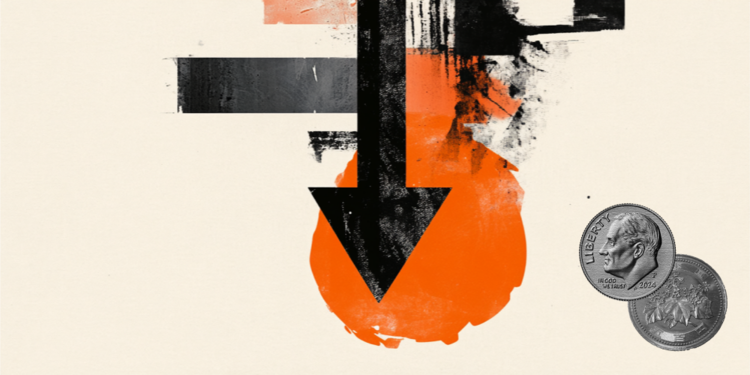A study carried out by the Satellite Image Analysis and Processing Laboratory (Lapis), at the Federal University of Alagoas (UFAL), published in the international journal Water, shows through satellite images how the country’s largest rivers are drying up.
The report shows that 55% of the national territory has already been affected by the drought, which is the most extensive ever recorded . 4.6 million km² are affected by the problem.
According to the study, the Central-West, Southeast and Amazon regions are the ones with the greatest reduction in the flow of rivers, lakes and reservoirs. At least 12 large rivers are already being affected by the drought.
About the study
According to the research, rising temperatures were the main cause of drought in Brazil’s rivers. The flow of the São Francisco River was impacted by heat waves that have occurred one after the other this year.
Another alarming fact is that the increase in temperature was greater than the reduction in rainfall. This explains how these extreme heat waves were crucial in reducing river flow, especially at the beginning of droughts.
River flow data showed how the decrease in flow was due to a decline in precipitation and a simultaneous increase in air temperatures over the past 30 years.
The situation of rivers in Brazil
The lack of rain, combined with high temperatures, has resulted in river levels significantly below the average expected for this time of year in the country.
Cemaden’s hydrological researcher, Elisangela Broedel, reports that although the drought intensified between May and August 2024, drought monitoring conducted by Cemaden/MCTI indicates that the drought, particularly in the strip that extends from the states of Acre and Amazonas to the state of São Paulo and the Triângulo Mineiro, began in the second half of 2023.
“As a result of this situation, many municipalities have already faced drought conditions for 12 consecutive months, contributing to the reduction of river levels and flows and the greater risk of fire spreading,” explains Broedel.

Which rivers are in the worst condition in the country?
According to the Standardized Bivariate Precipitation-Runoff Index (TSI), on a 12-month time scale — one of the methods used by Cemaden to characterize hydrological droughts at a national level —, the hydrographic basins that are currently in the most critical condition are those of the rivers: Paraguay (including the Pantanal region), Paraná and its tributaries, Amazonas and its tributaries, Tocantins, Araguaia, Jequitinhonha, Paraíba do Sul and São Francisco (mainly in the headwaters).
The causes of drought result from a combination of factors that span different spatial and temporal scales.
“The last rainy season was deficient throughout the central-northern part of the country, due to the action of the El Niño phenomenon, which normally causes a decrease in rainfall in this region,” explains Broedel.
As a result, the weak rainy season failed to adequately replenish soil and vegetation moisture, nor recharge aquifers, keeping river levels below expected levels.
Expectations for the future
According to forecasts based on the Standardized Bivariate Precipitation-Runoff Index (TSI), there is an expectation of worsening droughts in several regions of the country.
This index, which combines precipitation and flow data, suggests an intensification of drought conditions, highlighting the significant impact on local water resources.

Forecasts indicate that, in September, droughts will intensify especially in the basins of the Jequitinhonha, Tocantins, Paraná, Paraíba do Sul rivers, in the Cantareira System in Greater São Paulo, and also in the rivers in the south of the country, such as the Jacuí River (in the state of Rio Grande do Sul), the Iguaçu River (between the states of Paraná and Santa Catarina) and the Uruguay River (between the states of Santa Catarina and Rio Grande do Sul).
“The trend is for extreme events related to both excess and scarcity of water to become more frequent over time, due to climate variability and change,” warns Broedel.
This phenomenon can intensify the occurrence and severity of droughts, as well as increase the intensity and frequency of extreme events such as storms and floods.
“In addition, changes in land use, such as burning and deforestation, modify the hydrological cycle by affecting vegetation cover and the soil’s ability to retain water,” he explains.
The researcher concludes by saying that these practices alter evapotranspiration, which in turn affects cloud formation and precipitation patterns, contributing to a more unstable and unpredictable hydrological cycle. The result is an increase in risks related to water resource management and the resilience of ecosystems and communities.
This content was originally published in Understand why rivers in Brazil are drying up on the CNN Brasil website.
Source: CNN Brasil
I’m James Harper, a highly experienced and accomplished news writer for World Stock Market. I have been writing in the Politics section of the website for over five years, providing readers with up-to-date and insightful information about current events in politics. My work is widely read and respected by many industry professionals as well as laymen.







